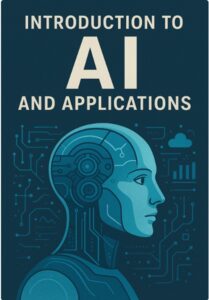Language Models
A language model is a probability distribution over words or word sequences. In practice, it gives the probability of a certain word sequence being “valid.” Validity in this context does not refer to grammatical validity. Instead, it means that it resembles how people write, which is what the language model learns. This is an important point. There’s no magic to a language model like other machine learning models, particularly deep neural networks, it’s just a tool to incorporate abundant information in a concise manner that’s reusable in an out-of-sample context.[ source :https://builtin.com/data-science/beginners-guide-language-models]
LANGUAGE MODEL DEFINITION
A language model uses machine learning to conduct a probability distribution over words used to predict the most likely next word in a sentence based on the previous entry. Language models learn from text and can be used for producing original text, predicting the next word in a text, speech recognition, optical character recognition and handwriting recognition. [ source :https://builtin.com/data-science/beginners-guide-language-models]
Language models are computational models that use statistical and machine learning techniques to understand and generate natural language. These models are trained on large datasets of text and are able to learn patterns and relationships within the language. They can then be used for a variety of natural language processing tasks, such as speech recognition, machine translation, text generation, and sentiment analysis.
Language models are typically designed to predict the probability of a given sequence of words or characters, based on the probability of previous sequences. This allows them to generate new text that is coherent and similar to the language they were trained on. They can also be used to classify or label text, based on its content or sentiment.
Language models have become increasingly popular in recent years, thanks to advances in deep learning and neural networks. These techniques have allowed for the creation of larger and more complex models, which can process and generate natural language with greater accuracy and fluency. As a result, language models are now used in a wide range of applications, from chatbots and virtual assistants to language translation and content generation.
Working of Language Models
The working of a language model involves training it on a large dataset of text and then using that training to generate new text or analyze existing text. The specific process for building and training a language model can vary depending on the model architecture and the intended application, but here is a general overview of how language models work:
- Training Data: The language model is trained on a large corpus of text, such as books, articles, or web pages. The text is typically preprocessed by tokenizing it into words or subword units and cleaning it to remove any irrelevant content.
- Data Preparation: The training data is divided into sequences of fixed length (e.g., 10 words per sequence), which are used to train the language model. Each sequence is paired with a target sequence, which is the next word or set of words in the original text.
- Model Architecture: The language model is designed using a specific architecture, such as a recurrent neural network (RNN) or transformer. The model takes in a sequence of words and outputs a probability distribution over the possible next words in the sequence.
- Training: During the training process, the model is fed a sequence of words and must predict the next word in the sequence based on the probability distribution output by the model. The model’s parameters are adjusted to minimize the difference between its predicted probabilities and the actual target sequence.
- Inference: After training, the language model can be used for a variety of tasks. For example, it can be used to generate new text by feeding in a starting sequence of words and then repeatedly sampling from the probability distribution output by the model to generate the next word in the sequence. The model can also be used for language understanding tasks, such as sentiment analysis or named entity recognition, by feeding in a sequence of words and using the model’s output to classify or label the text.
Overall, the goal of a language model is to learn the patterns and relationships within a language so that it can generate or analyze new text with a high level of accuracy and fluency.
Types of Language Models
There are two types of language models:
- Probabilistic methods.
- Neural network-based modern language models
- Probabilistic language models: These models use probabilistic methods to estimate the probability distribution of the next word in a sentence, given the previous words. N-gram models, Markov models, and Bayesian models are examples of probabilistic language models. These models are based on the assumption that the probability of the next word depends only on the previous words and not on the context of the sentence.
- Neural network-based language models: These models use deep learning techniques such as recurrent neural networks (RNNs) and transformers to learn the patterns in language and generate text. These models are trained on large amounts of text data, and they can capture complex patterns in language, including syntax and semantics. The most famous example of a neural network-based language model is the GPT (Generative Pre-trained Transformer) series of models, which have achieved state-of-the-art performance on a wide range of natural language processing tasks.










